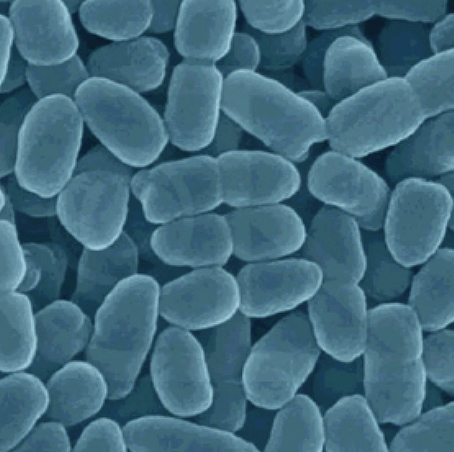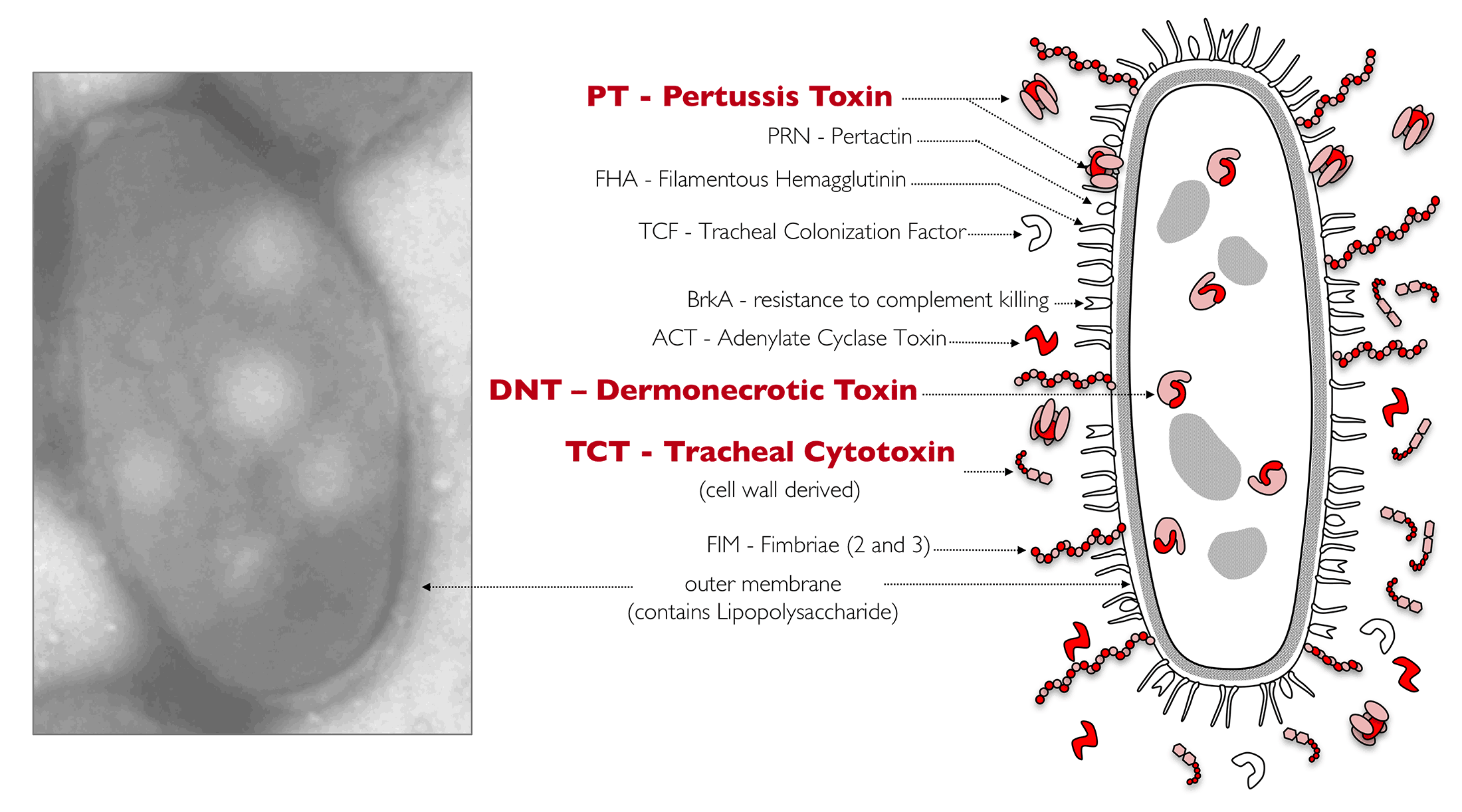
Bordetella Pertussis (B. pertussis) is a highly contagious gram-negative bacterium, which is transmitted by a cough, sneeze or simple exhalation. Due to a variety of secreted adherence factors and toxins, B. pertussis is highly adapted for nasopharyngeal colonization, is one of the few microbes that binds to and paralyzes cilia, and is predisposed to evading host immunity. Pertussis toxin (PT), dermonecrotic toxin (DNT), and tracheal cytotoxin (TCT), are three highly pathogenic toxins that have been identified as playing key roles in the course of symptomatic whooping cough. For example, PT has a range of potent biologic activity. After being secreted from B. pertussis, PT can migrate to various susceptible cells and tissues where it can impair normal cellular function and alter immune responses. Pertussis toxin is also a powerful adjuvant, inducing and enhancing inflammatory response to antigens like pollen, gluten, and neural proteins.

Can dysregulate the conversion of ATP to cyclic AMP, and thereby disrupt cellular functions such as that in white blood cells (a key immune defender against infection) that can impair normal immune cell bactericidal activity. PT can inhibit phagocytosis, a process whereby white blood cells ingest and kill bacteria. PT can also impair chemosensing signals that guide white blood cells to pathogen targets, and can alter the production and release of hormones such as insulin and neurotransmitters such as glutamate.
Causes inflammation and necrosis to tissues such as lung, bone, and nasal turbinate tissues. It can also induce vasoconstriction in the uterus, intestine and cardiovascular structures such as the aorta. Through its effects on Rho GTPases, DNT can also affect important cellular functions. Evidence also suggests DNT is a neurotoxin.
Damages respiratory tissues and paralyzes cilia so they no longer beat properly. Damaged respiratory cells and impaired cilia can lead to stagnant mucus in the nasal passages, airways and lungs, the prevention of pathogen removal, increased risk of pulmonary infections, and potentially to pneumonia and coughing fits (e.g. whooping cough).